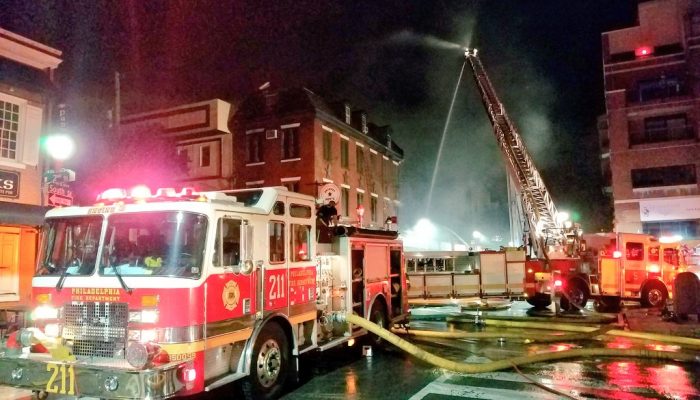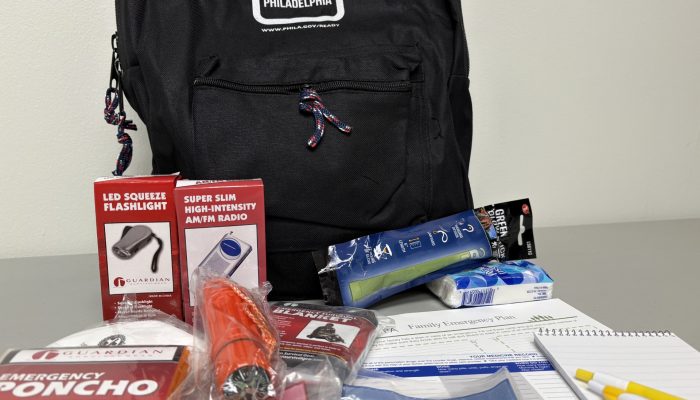by Joel Landau |Communications Specialist, Office of Emergency Management September 1, 2020
Be prepared. Be safe.
The U.S. Department of Homeland Security designates September as National Preparedness Month to encourage the public to promote family and community disaster planning.
The more preparation an individual does now to prepare for an emergency can significantly lessen the anxiety he or she may feel when an emergency occurs, and provide assurance that they are doing the best they can to keep themselves, their loved ones, and their possessions safe.
The 2020 NPM theme is “Disasters Don’t Wait. Make Your Plan Today,” and each week has a separate theme so residents can take the necessary steps to ensure they are prepared.
While planning for emergencies, keep in mind how the worldwide pandemic of COVID-19 has changed the way you prepare and react to a crisis.
The Philadelphia Office of Emergency Management has many tips and resources to help residents become organized for a wide assortment of emergencies whether they need to stay home or evacuate.
MAKE A PLAN
OEM provides a comprehensive list for residents to make an emergency plan. It’s crucial to strategize for each type of incident such as a house fire, snow storm, power outage, hurricane, or terrorist attack. Preparations should include an emergency plan, storing emergency supplies in your home, and deciding how to shelter-in-place and evacuate.
IMPORTANT PLANNING TIPS
• Write the plan down – Document what your family will do when there is an emergency, and use the family emergency plan form to record important contact details. Make sure everyone in your household has a copy.
• Learn about shelter-in-place – Pick one room in your home to be your shelter-in-place room. Have enough food and other supplies for three days.
• Talk about how to evacuate – Pick two places where your family/household can meet after an emergency. One should be near your home and the other should be outside your neighborhood. Decide what to include in your “go bag” to take with you.
• Consider health – Fill out a health information form for anyone with medical conditions, special needs, or prescription medications.
• Practice –Have fire drills, use different exits, and ensure everyone knows how to get to your emergency meeting places. Plan for anyone who has a functional or accessibility need.
• Create a family communications plan – Ask an out-of-area relative or friend to be someone that household members can call during an emergency. Every member of your family should have the phone number of the emergency contact person.
BUILD A KIT
A shelter-in-place kit can be extremely useful if you are sheltering at home or evacuated so you have essential supplies for your family including pets.
A “go bag” is a smaller, personal evacuation kit. It includes basic supplies to keep you and your family healthy, safe, and financially protected when you need to leave your home quickly. A typical “go-bag” has copies of personal identification, extra sets of keys, cash, medication, and a map with evacuation routes among other items.
PREPARE FOR DISASTERS
Whether you are sheltering in place or evacuating your home, it is essential to remain calm and listen to authorities as they guide you through this ordeal. In the event of an emergency, check TV and radio news stations, as well as Channel 64, for notifications. ReadyPhiladelphia will also send out text and email alerts. Sign up here to customize your free email or text alerts or text READYPHILA to 888-777 for free texts.
The shelter-in-place room should be above street level with as few doors and windows as possible. It should have enough space for everyone in your home, as well as electricity, water, and bathroom facilities. Use your shelter-in-place kit so you don’t have to leave the room to get food or other supplies.
In an evacuation you should have plans to stay with family or friends. If you have nowhere to go, the City will open shelters. You should bring your own clothing, sheets, sanitary supplies, medicines, and your “go bag” with you. Close and lock windows and doors and unplug appliances before you leave. Officials will tell you if you need to turn off utilities.
OEM provides additional information for preparing for different hazards as well as what to do after an emergency.
Teach Youth About Preparedness
Emergencies can happen anywhere at any time so it is vital for everyone in the household to be informed and ready – including children.
Homeland Security has a number of resources to help educate youth about disasters on its website where families can learn about being prepared in a variety of ways. The works encourage children to be involved in the planning, help teenagers to become leaders on this issue, and for educators and youth organizations to educate, plan, and provide recovery tools.




